The Omiya Bonsai Museum held an exhibit this winter featuring the work of Tomio Yamada of Seiko-en. “Bonsai: Quest for Beauty,” is the third exhibit in a series featuring the work of contemporary bonsai masters.
From Yamada:
It’s been over fifty years since the way of bonsai first called to me and I started creating these pieces. To show the fruits of my work of this past half-century, with this exhibit I will try to include a harmony of bonsai pine and other trees, with a focus on plum and cherry to represent springtime. I would be extremely pleased if those who visit the exhibition can get a real sense of the “beauty of early spring in Japan” as expressed in my bonsai.
The museum exhibit space has both contemporary and traditional display spaces. The Main Gallery features five contemporary displays made of wood and glass.
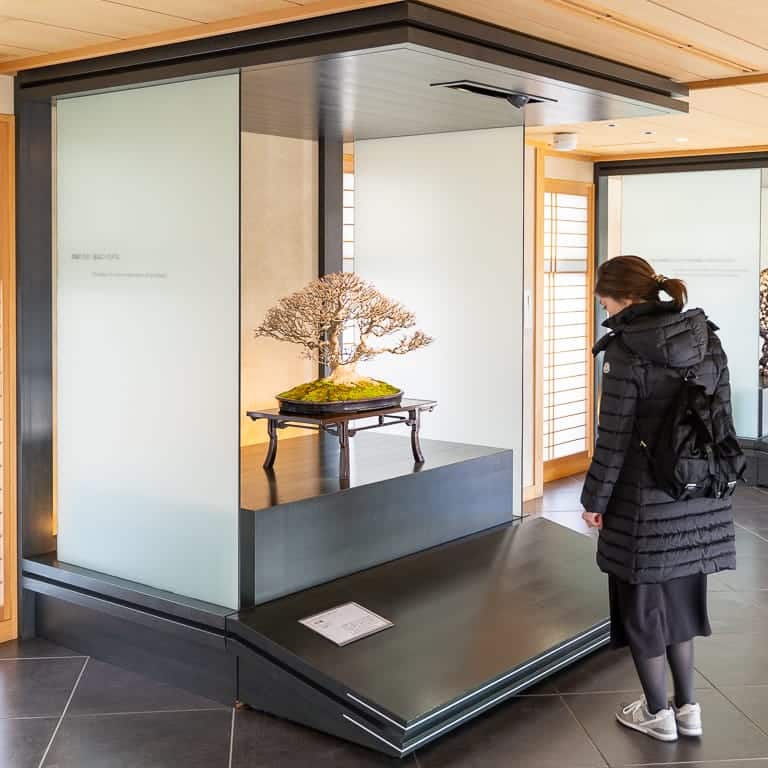
Contemporary display
Here are some of the trees featured in the Main Gallery.
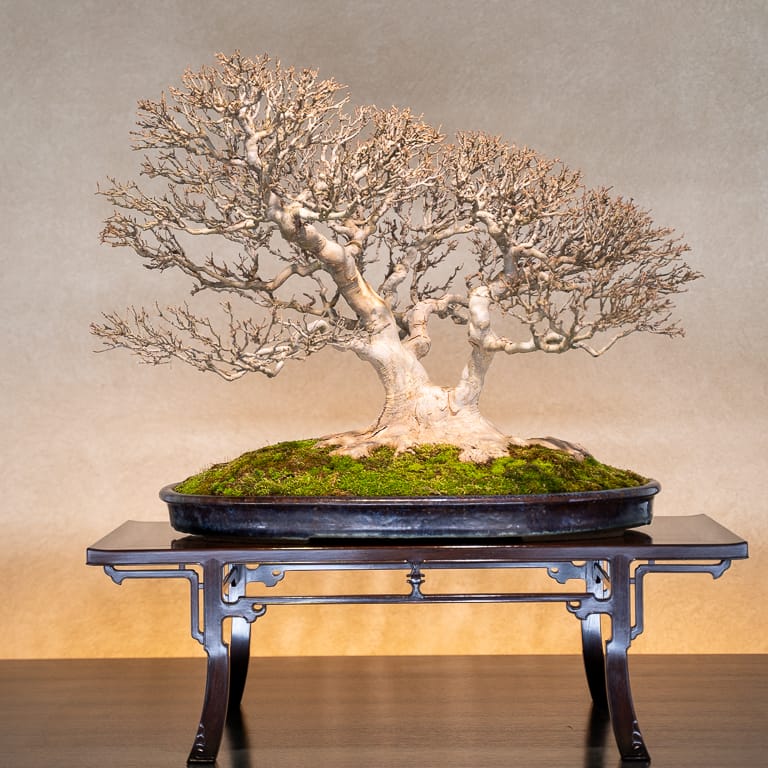
Trident maple – 120 years old
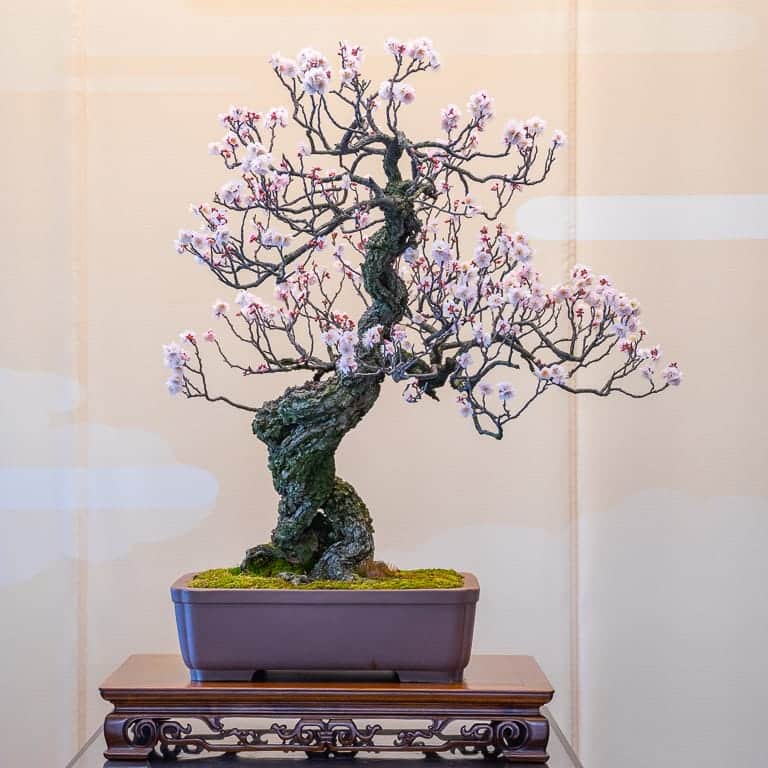
Ume
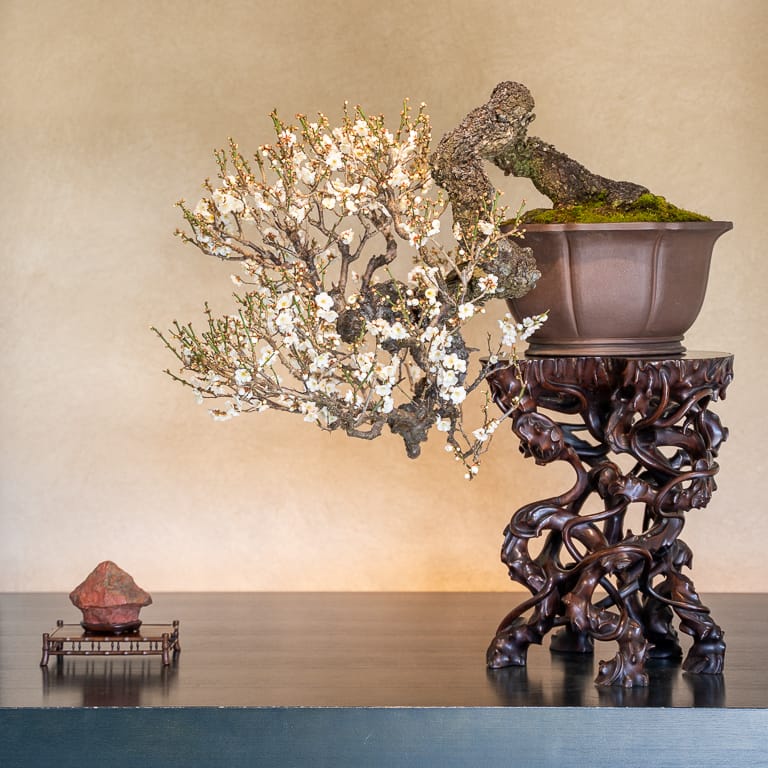
Ume – 200 years old
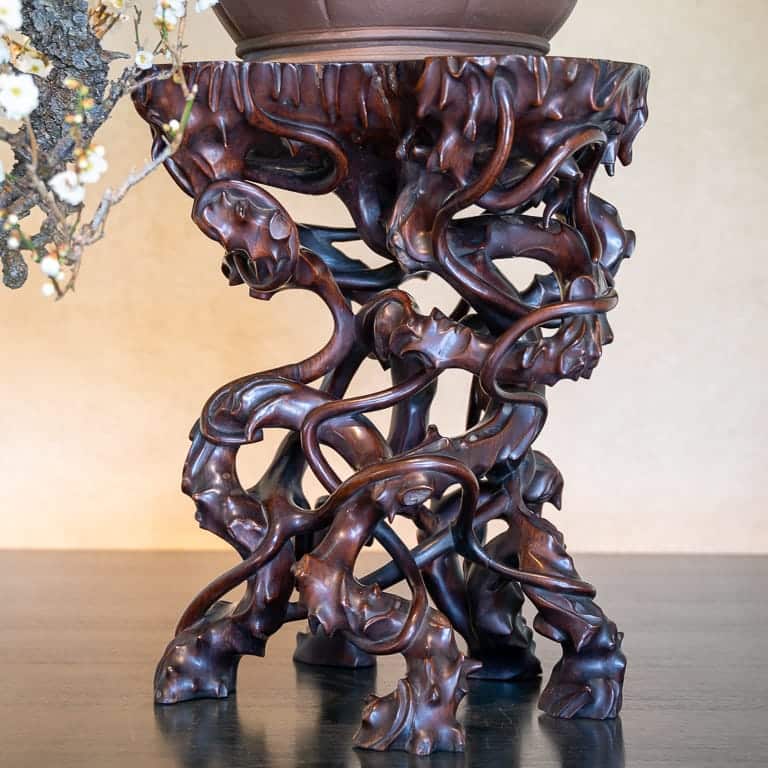
Carved root stand

Japanese cherry – 50 years old
Just past the Main Gallery is the Zashiki kazari area. The displays here represent rooms we might see in traditional Japanese homes. The most formal display area featured a famous white pine named “Higurashi.”
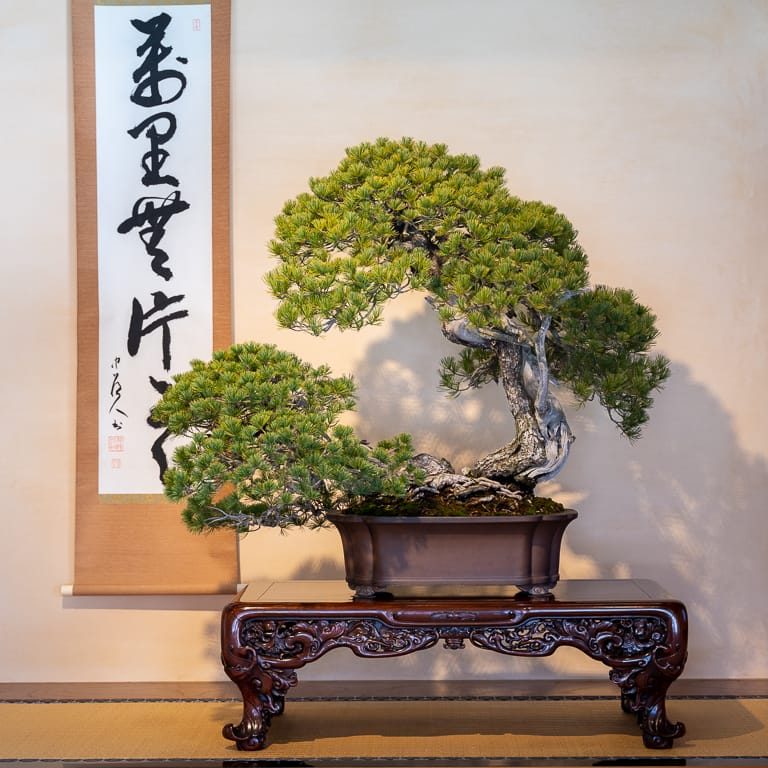
“Higurashi” – 450 year old white pine
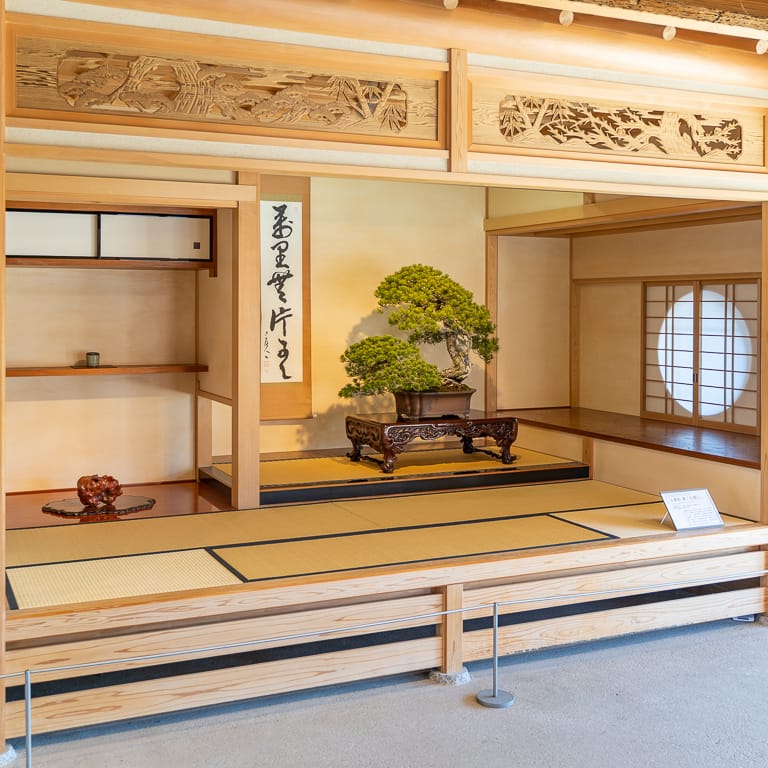
Shin-style display room
A well-known ume, “Seikou no mai,” was displayed in the Gyo-style room.
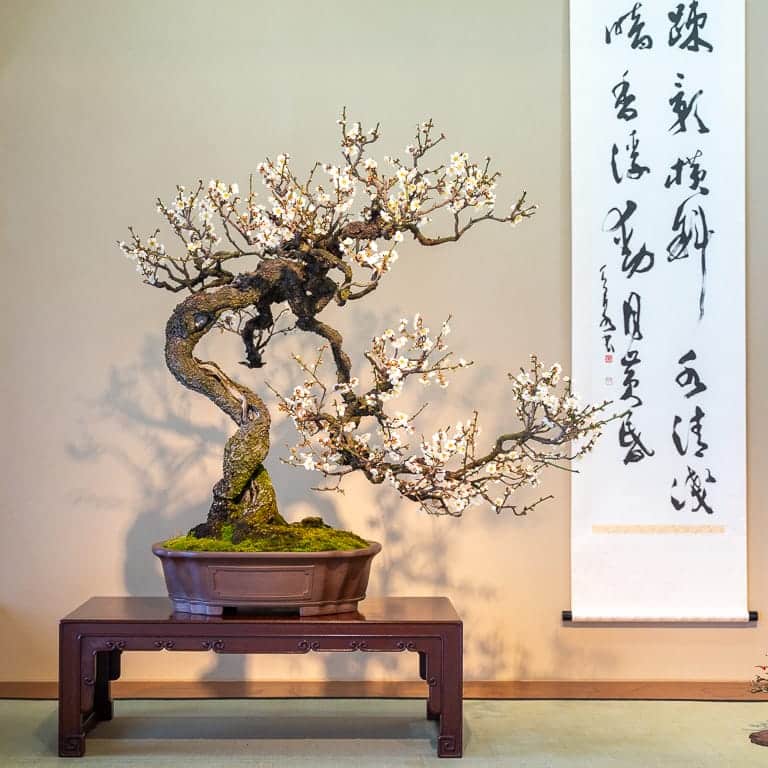
Seikou no mai – 200 year old ume
Just past the indoor galleries, visitors exit the main building to access the garden. More on that in the next post!
Note: Special thanks to Gomi Takanari san, Senior Clerk, and Ishida Rumiko san, Curator, for inviting me to photograph the Yamada exhibit and bonsai garden. Gomi san and Ishida san were wonderful hosts who made this my favorite visit to the museum to date. Thank you both!
Visit the Omiya Bonsai Museum website to learn more.
Subscribe to Bonsai Tonight
New Posts Delivered Every Tuesday and Friday
Jeff Aldridge says
Your posts are definitely making self-quarantine more palatable! Thanks Jonas
Jonas Dupuich says
Thanks, Jeff!
Zack Clayton, CBS Editor says
I am featuring this in our “Found on the Web”section of our newsletter. And, I think I will use the Photo of the Cascade Ume stand to talk about things to consider in a root stand.
Jonas Dupuich says
That’s great – thanks, Zack!
June says
Breath-taking. Tx for sharing, Jonas. June
Lani Black says
Jonas,
Here is my question: the ume, if I wanted to train my younger trees to have a trunk twist like that, is that man-made or is that the way they tend to grow?
Lani
Jonas Dupuich says
I’d add the twists while the trees are young. While I’ve seen some tendency for ume to twist naturally, I haven’t seen many trees in gardens or in the landscape that twist like these trees.